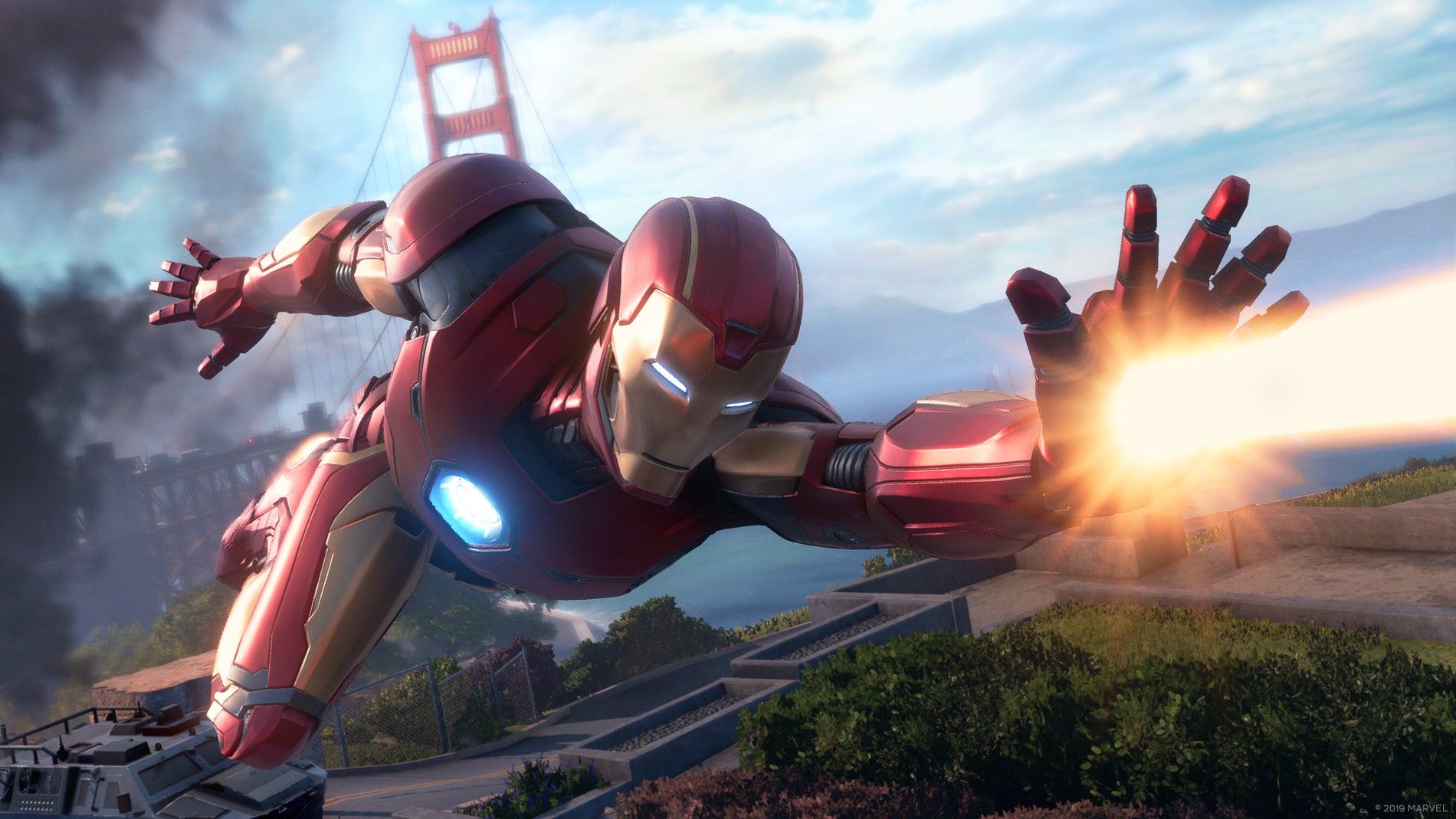Our Verdict
A well-told campaign and story do their best to mask a rather scrawny service game beneath.
PC Gamer's got your back
As the Marvel’s Avengers campaign ends, to be replaced by samey missions, it reminds me of the dual identity of so many superheroes. Avengers straps on its tightest, glossiest spandex for the campaign and dazzles with its moves, but once that adventure ends and it returns to the daily grind of a multiplayer-oriented endgame, it blurs into the crowd. Inoffensive, yet indistinguishable but for its famous superhero superstars.
The frustrating thing about Marvel’s Avengers is that for the first few hours, you see hints of what it could have been—a visually spectacular and satisfying adventure—but then a functional, unoriginal loop of missions takes over, and you realise that that’s the actual game you’ll be spending most of your time with.
The campaign offers a simple story, following future Ms. Marvel Kamala Khan as she seeks to reassemble the Avengers following a disaster that creates a wave of new superheroes labelled as ‘Inhumans’. You’re pitted against floating-head-with-tiny-limbs, MODOK, who’s intent on wiping out all Inhumans with the help of AIM’s Scientist Supreme Monica Rappaccini and her army of robots.
A pretty regular Marvel setup then, and beautifully written, animated, and voice-acted throughout. I found myself actively looking forward to the cutscenes and snippets of in-game banter.
The relationship between Bruce Banner and Kamala Khan unfolds beautifully. Banner’s unsure body language and mix of irritation and avuncular care he shows towards Khan—whose chirpy teenage optimism is just what 2020 needs—is a masterclass of voicework and mocap. It also elegantly addresses the fact that, to a 30-plus curmudgeon like me, the fresh-faced Khan can be kind of annoying, but her convincing character arc soon gets me completely onboard.
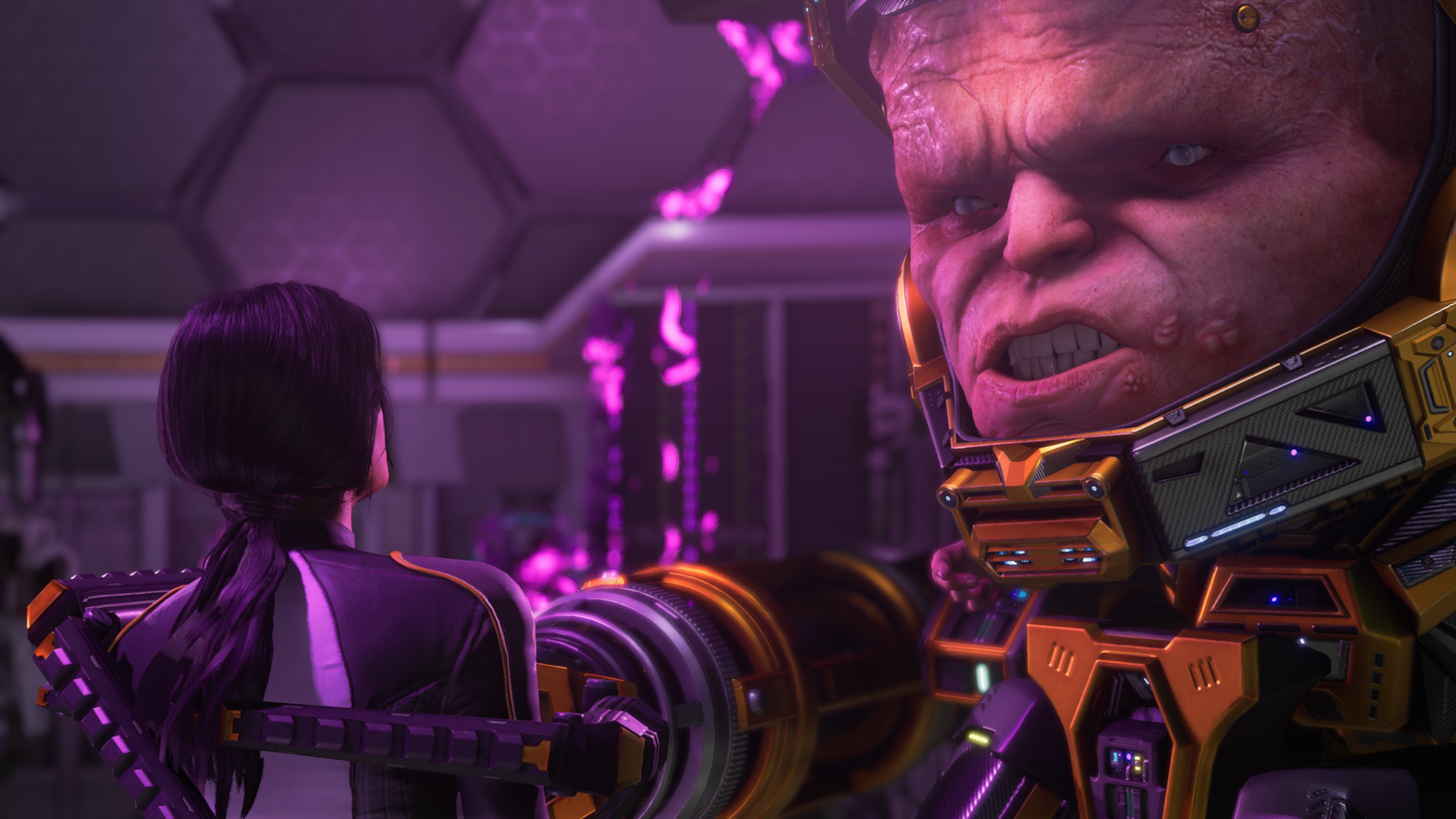
Given the amount of big names the campaign has to introduce, it’s understandable that not all the relationships get the same level of attention, but each character still entertains as you bring the Avengers’ floating command centre back to life. The villain MODOK, with his pustulent, hypertrophic head that seems to swell up with every scene, is brilliantly brought to life. The performance turns one of Marvel’s goofiest-looking heroes into a memorable, eerily soft-spoken villain.
However, once you’re aboard the Avengers’ Chimera ship, it becomes a little too obvious that you’re being roped into the publisher’s long game. You walk around on deck as your Avenger of choice, picking up time-limited challenges from vendors, buying gear using real or in-game currency, and using a map to freely drop into missions set across several biomes around the world. Some you do solo, others you do alongside up to three other Avengers, who can be controlled by AI or online players. I’d play with others where possible, and it speaks to the simplicity of the missions and combat that there’s not too much need for communication or a balanced squad.
I did get to play online alongside Hulk wearing a Hawaiian shirt and fedora though.
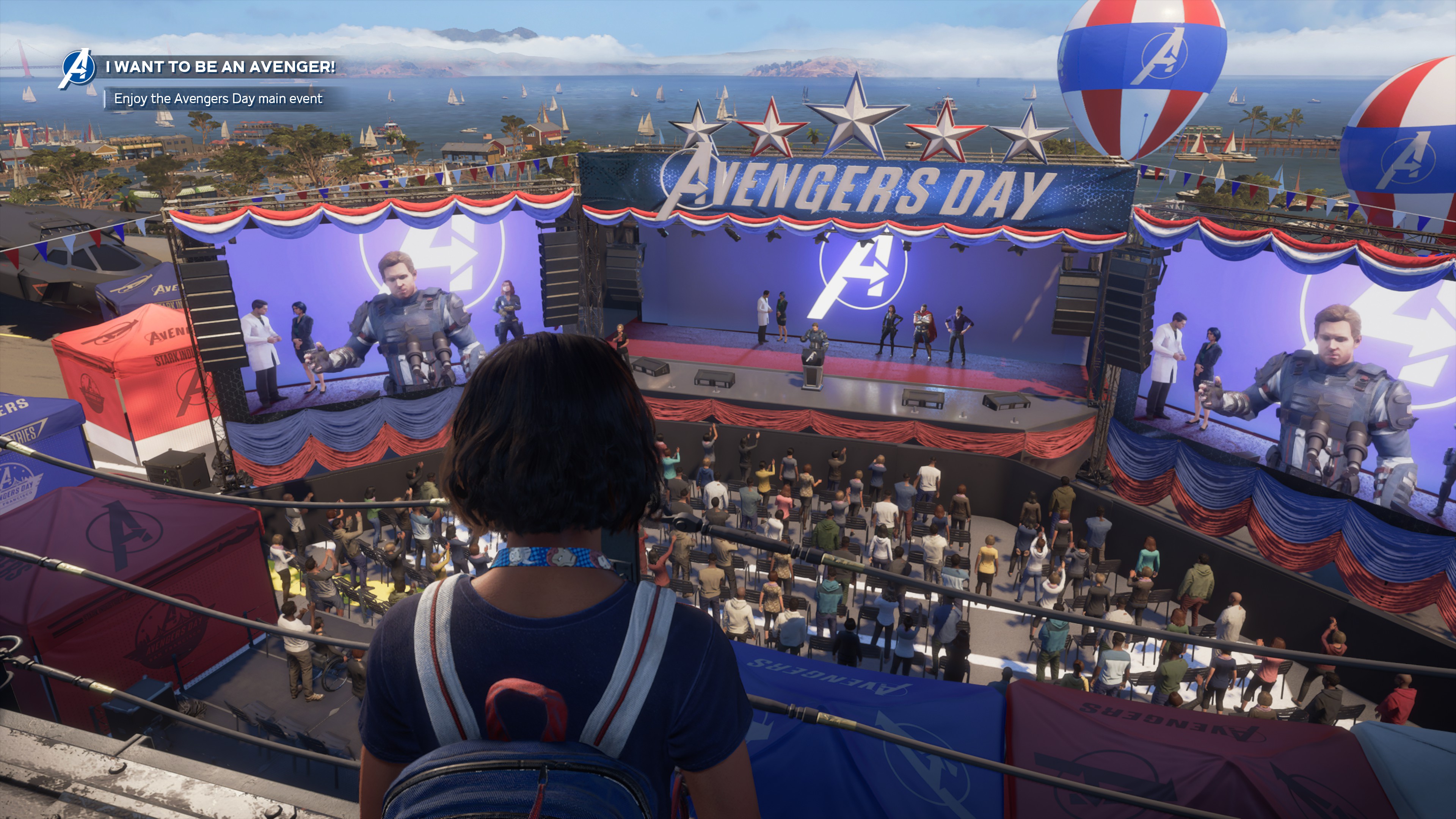
I’ve been reading a a little bit about performance problems on PC, but can say that my experience has been mostly stable. There were a couple of odd bugs during the campaign that forced me to restart the game, and multiplayer matchmaking has been very slow from my experience, forcing me to give up after minutes of waiting multiple times.
The combat is a curious mix of classic brawler moves like juggling, suspended aerial attacks and light-heavy combos with the counter-and-dodge-based style of the Arkham games (there’s even a move where you jump over a shielded enemy’s head to break their shield). Little icons on the edges of the screen tell you how close a missile or laser is to blasting you away, while enemy melee attacks are telegraphed by coloured circles, which let you know whether to dodge or parry them. Get enough attacks together, and your rage meter fills, letting you unlock spectacular special moves like Iron Man summoning his Hulkbuster mech, or Ms. Marvel turning into a long-limbed giantess resembling a wacky waving inflatable tube girl.
The icons give you a lot to think about while filling your screen with a confetti of mechanised enemies and special moves executed by your fellow Avengers, and it doesn’t always feel like you—or even the game itself—can keep up. A couple of dozen hours in, I’ll still often dodge instead of parrying when the enemy attack circle is white (dodge for red, dammit!), and that all-important telegraphing of enemy moves isn’t entirely consistent, and the camera’s a little too close for comfort - great for ogling Hulk’s slabs of back muscle, not so great for managing space in a scuffle.
Playing as the speedsters of the group, Ms. Marvel and Black Widow, feels much better than Hulk, whose lumbering style doesn’t sync well with the already slowish animations and floaty jumping physics. High-flyers Iron Man and Thor, meanwhile, definitely offer a buzz as you can freely swoop into battle from way overhead of your buddies. Unfortunately finer aerial maneuvering and attacks are fiddly and much weaker than melee. It may be fun to fly, but the action’s really on the ground.
But in a game so much about fan service, there’s something to be said for making each superhero feel unique, even if that is at the expense of balance. The characters move and attack just like you remember from the movies or imagine from the comics, right down to the disinterested way Hulk toe-pokes chests open. During these little moments, and amidst the on-screen muddle when you string together a bunch of counters and executions before letting rip with a hero’s special move, the superhero fantasy successfully shines.
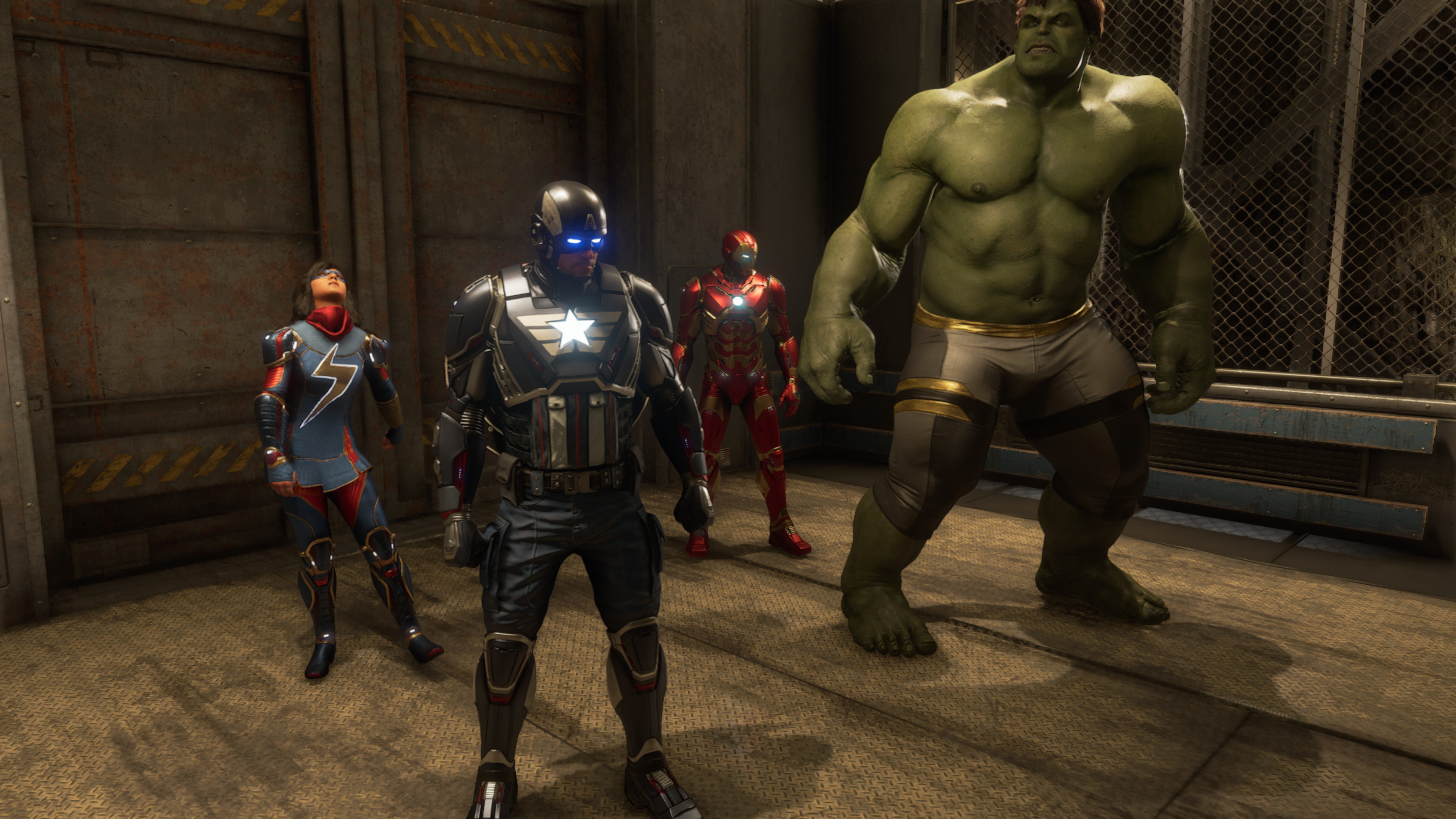
The bigger problems come later. Missions may be set all over the world, but levels themselves are sparse expanses of snow/forests/city where you hunt for crates hidden in metal bunkers guarded by faceless robots, before proceeding to complete a main objective—destroying a few structures, or holding onto some control points, Battlefield-style.
The game tries to spruce things up with awkward platforming segments and hunts for SHIELD stashes (essentially a slightly better stash among endless stashes), but they’re visually ugly and unvaried, in stark contrast to the elegantly animated and designed superheroes that run around them.
Also, for some reason the ‘Power’ level required for various missions is all over the place, greatly restricting the amount of missions you can tackle. I was quite up for a boss-fight mission that SHIELD offered for their daily challenge (which improves your faction rank with SHIELD, which lets you buy locked-off gear yada-yada), only to find that I was dozens of levels below being able to do it. These are the kinds of things that can be smoothed out over the coming months, but as things stand a good chunk of the endgame remains level-gated.
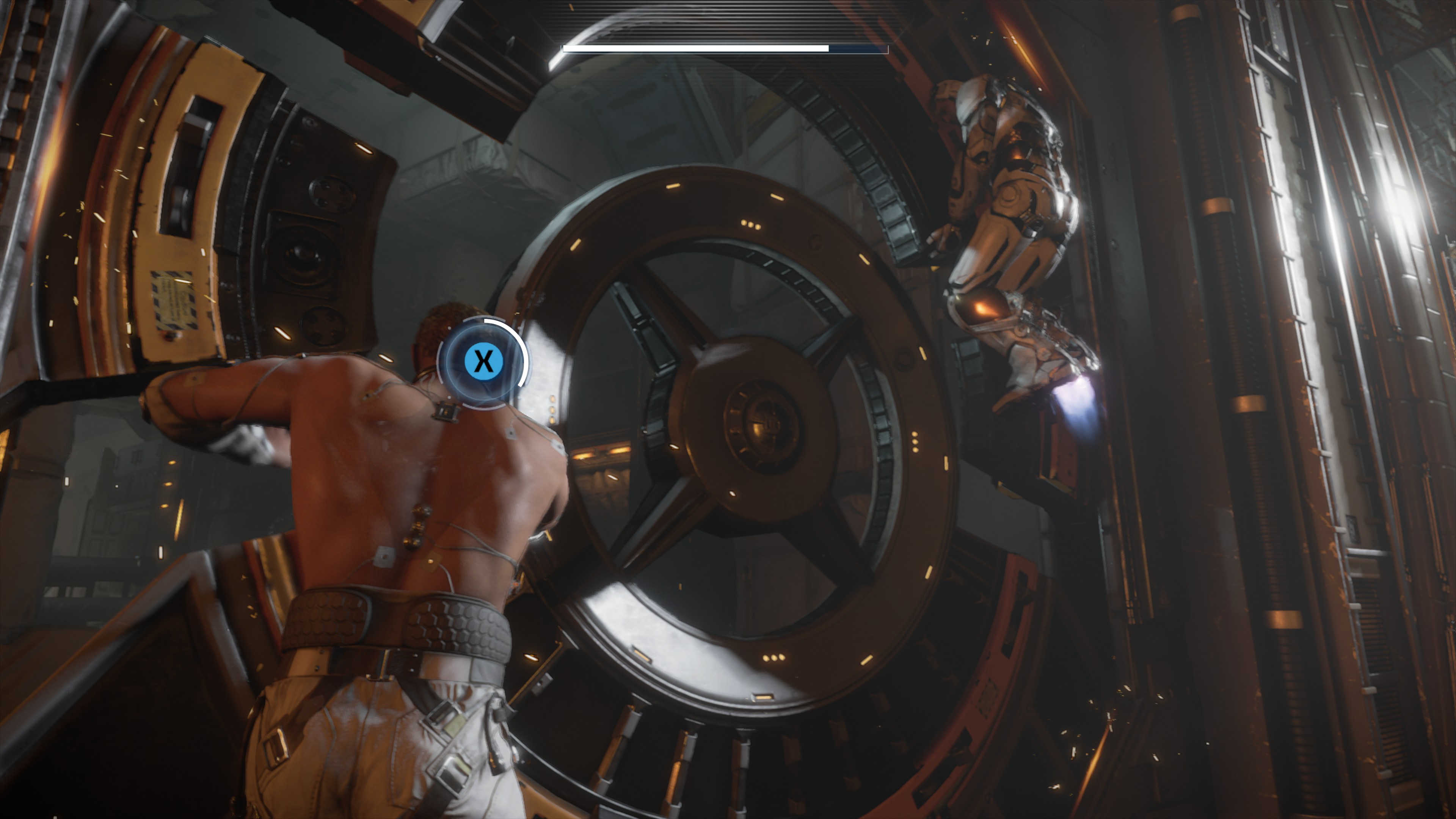
Back aboard the Chimera, the metagame of daily challenges, endless gear upgrades (with daily ‘specialty’ items) and missions becomes particularly noticeable post-campaign. Without the more bespoke campaign-specific missions and story to break them up, the monotony begins to set in, and while there is an obsessive feedback loop to repeating missions, upgrading your gear, and improving your character in perpetuity, you don’t even get to see these gear upgrades. The only aesthetic changes are different costumes, which are a hard to find, and otherwise locked behind higher levels and real-world currency.
There’s nothing too egregious about the microtransactions, which are purely cosmetic and also include emotes, nameplates and execution animations, but there’s nothing particularly satisfying to work towards in the endgame either.
Perhaps a fleshed-out single-player campaign will never be enough to satisfy Avenger's marketing aims. The story is worthy of Marvel’s movie canon, but it’s too short and ends up being a shiny wrapper for what’s currently a rudimentary game-as-service.
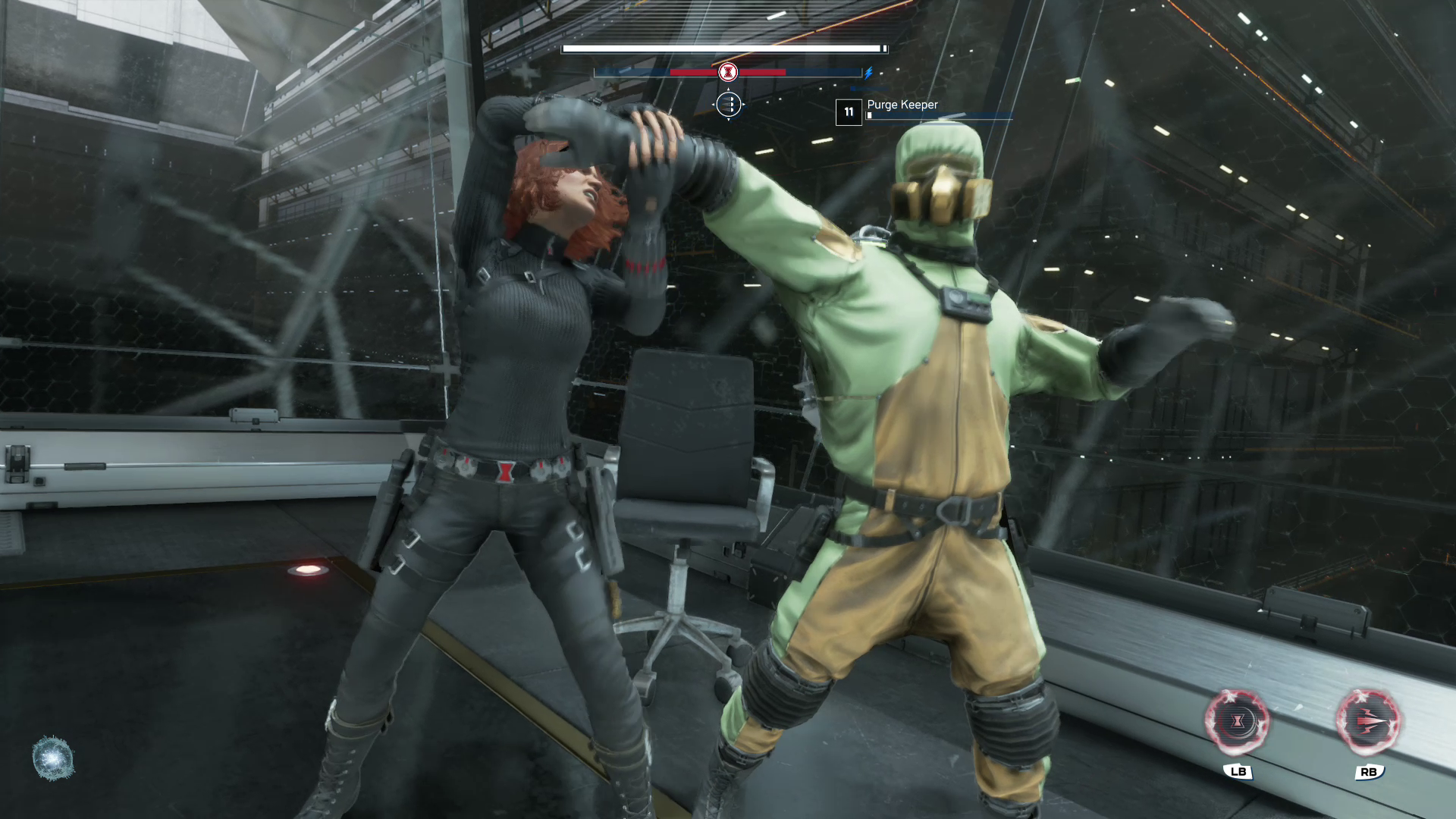
This comes with the caveat that it’s just getting started, and there have been plenty of online-oriented games that started slowly. There’s enough button-mashy mileage in the combat system, especially as new heroes get introduced as DLC, but it’s the mission design and loot loop that let it down. It's just not strong or varied enough to justify the long-term investment the game wants from you.
Not that justification beyond a 14-hour campaign and 'it’s your favourite superheroes and they look amazing' is needed for a day one purchase, based on the game’s early sales. But if Marvel’s Avengers wants to keep loyalists sweet and expand its player-base, it needs a lot more flesh on its vibranium skeletal armature. If only the game could carry some of its narrative prowess from the campaign over into the endgame.
A well-told campaign and story do their best to mask a rather scrawny service game beneath.
Robert is a freelance writer and chronic game tinkerer who spends many hours modding games then not playing them, and hiding behind doors with a shotgun in Hunt: Showdown. Wishes to spend his dying moments on Earth scrolling through his games library on a TV-friendly frontend that unifies all PC game launchers.
